How Much Does a Lifeline Inspection Cost?
Learn how much a lifeline inspection costs, what affects pricing, and when you need a Professional Engineer review.
Schedule your lifeline inspection today!
Watch the full video on the Lifting & Rigging Channel.
If your facility uses fall protection systems, inspections are not optional. OSHA and ANSI both require annual inspections for fall protection systems—and more frequent checks after any incident.
Lifeline systems are often out of sight and overlooked until an inspection reveals how much maintenance they truly need.
But the question most safety professionals and maintenance managers have is simple: What does a lifeline inspection actually cost?
The answer depends on several variables: how your system was designed, what documentation exists, where it’s installed, and whether a Professional Engineer (P.E.) needs to be involved.
Understanding these factors helps you plan budgets more accurately, avoid unexpected charges, and ensure full compliance with OSHA standards.
Here’s what our article will cover:
- Typical pricing for lifeline inspections
- The difference between a service inspection and a P.E. inspection
- What affects pricing and how to manage costs
- What’s included in a standard inspection
- How to prepare your facility to save time and money
- What happens after an inspection
- How often inspections are required by OSHA
- The true cost of skipping inspections
What’s the Typical Cost Range for a Lifeline Inspection?

Across industries, most lifeline inspections range between $500 and $10,000. The lower end of that spectrum applies to short or straightforward systems that can be visually inspected by trained service technicians. The higher end applies to large, complex systems that require analysis or recertification by a licensed Professional Engineer.
The inspector examines the hardware, connection points, and line tension, confirms the energy absorbers are functioning, and ensures there are no signs of wear or corrosion. These inspections are most common for systems that were professionally installed and already have engineering certification on file.
Costs Involving a P.E. Lifeline Inspection
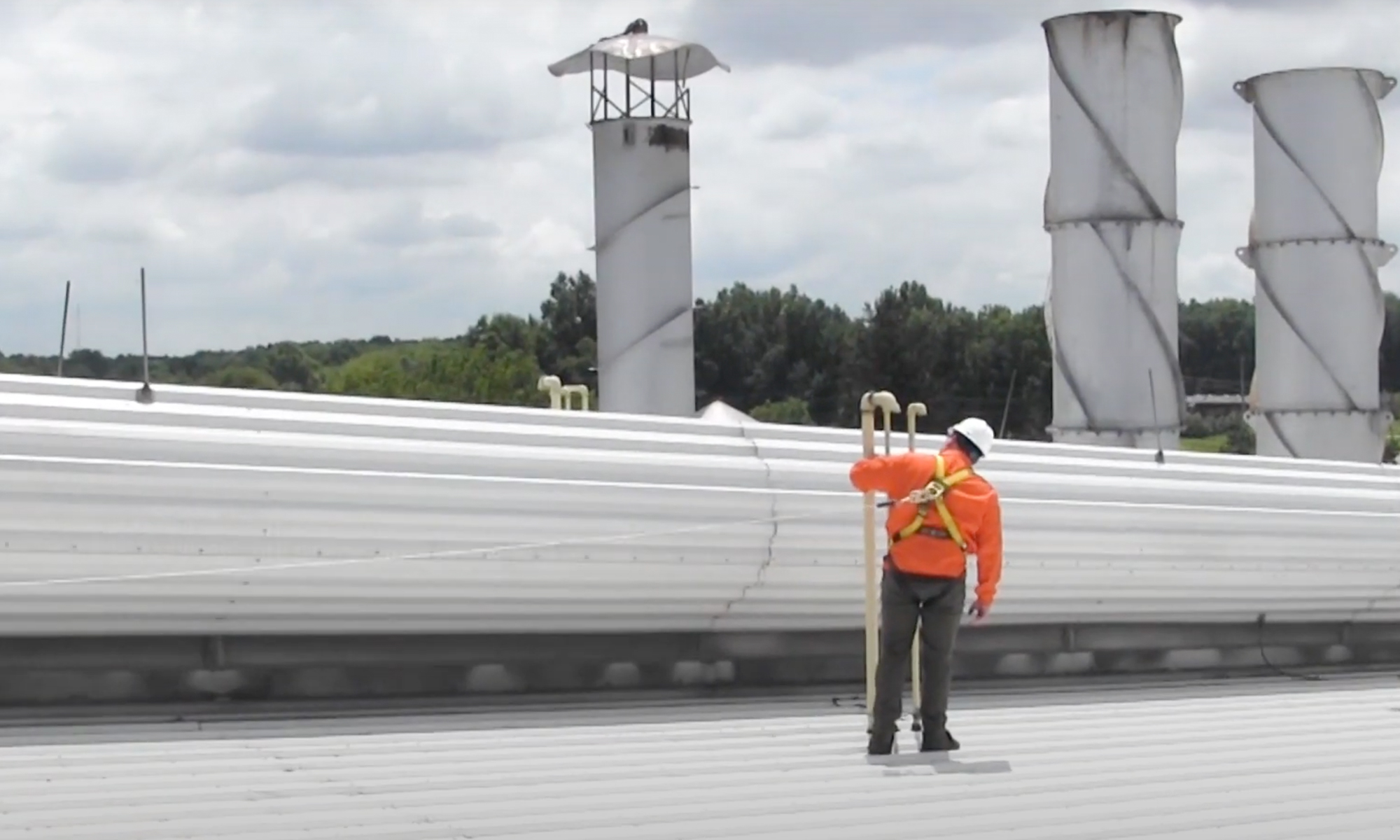
A P.E. inspection, by contrast, ranges from $2,500 to $10,000, depending on complexity and scope.
A P.E. review is required when there are no original drawings, load calculations, or certifications proving the structure can handle the required 5,000-pound fall-arrest load. This level of inspection includes both an on-site review of the system and an engineering analysis verifying that the lifeline and its supporting structure are safe for use.
In practice, most facilities fall somewhere in between. A single-line system might be inspected for $800, while a large multi-bay plant with 10 or more systems could exceed $5,000. Facilities that require a new engineering report, post-incident inspection, or drone-assisted documentation may reach the top of the range.
What Determines the Price of Lifeline Inspections?

Several factors influence where an inspection lands within that range. While labor time is a key driver, there are deeper reasons behind the cost.
1. Documentation and Engineering Records
If you can provide structural drawings or certification records from the original installation, inspection becomes straightforward. Without that documentation, the inspection team must treat the system as uncertified.
This often triggers a P.E. review to verify that the structure can withstand fall loads without failure. Systems built years ago or by in-house maintenance teams often lack this paperwork, which is why so many fall protection programs begin with a baseline engineering assessment.
2. Number and Type of Systems
Each independent lifeline, anchor, or rail system must be inspected, tagged, and recorded. A facility with one short horizontal line on a roof will pay less than a rail yard with multiple tracks and suspended systems spanning hundreds of feet. The more systems there are, the more hours are required on site.
3. Accessibility and Environment
Some systems are easy to reach; others are not. Lines located over production equipment, tanks, or moving machinery may require lifts, scaffolding, or confined-space procedures to access. If the environment is corrosive or outdoors, additional safety considerations may also add to the scope.
4. Soft Goods and Connected Equipment
When a lifeline inspection is scheduled, inspectors often evaluate the associated harnesses, lanyards, and self-retracting lifelines as part of the same service. Consolidating these inspections is efficient, but if soft goods are scattered across multiple buildings, gathering them can increase time on site.
5. Travel and Site Requirements
For remote facilities, travel costs, site orientations, and mandatory safety classes can affect total pricing. Many large industrial clients require on-site training or orientation for all vendors. If that training takes several hours, it may be factored into the hourly service rate.
What’s Included in a Lifeline Inspection?
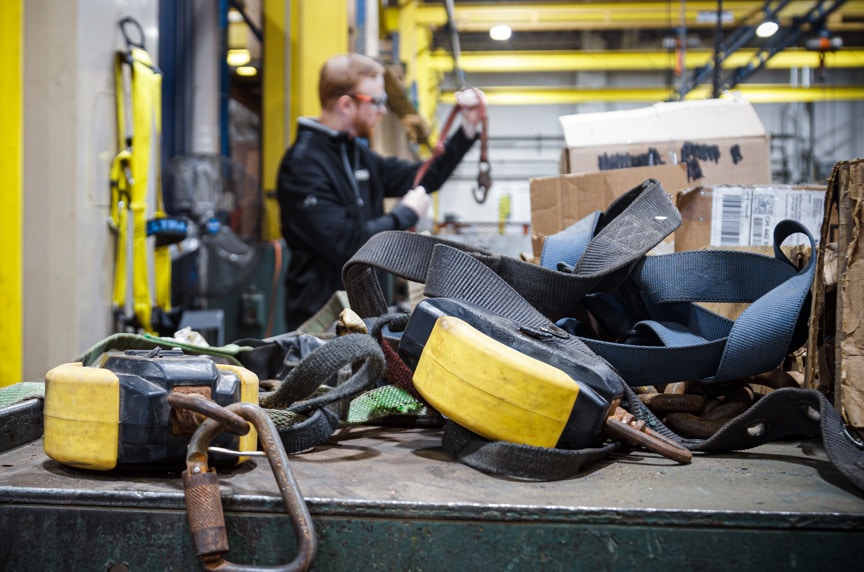
Every inspection—whether performed by a technician or a Professional Engineer—includes a combination of visual review, functional testing, and documentation. The goal is to verify that each component is in good condition and that the system will arrest a fall safely if activated.
During a standard service inspection, technicians examine the lifeline’s cable or webbing for signs of wear, corrosion, cuts, or fraying. They check that anchors, energy absorbers, and tensioners are secure and undamaged. Self-retracting lifelines are tested to confirm smooth extension and retraction and immediate locking under sudden load. Connectors, snap hooks, and carabiners are reviewed for deformation or sharp edges.
Any component that fails visual or functional testing is tagged out of service immediately. The inspector records serial numbers, manufacturer names, and conditions for each item and prepares a digital or paper report summarizing all findings.
A P.E. inspection goes one step further. After the physical review, the engineer evaluates the structure’s ability to support the required fall-arrest load.
If necessary, the engineer may use existing blueprints, field measurements, or drone imagery to verify load paths and connection points. The result is a signed certification letter stating whether the system meets OSHA 29 CFR 1910 Subpart D and Subpart I, along with any corrective actions needed for compliance.
What Can Increase or Decrease the Price of a Lifeline Inspection?
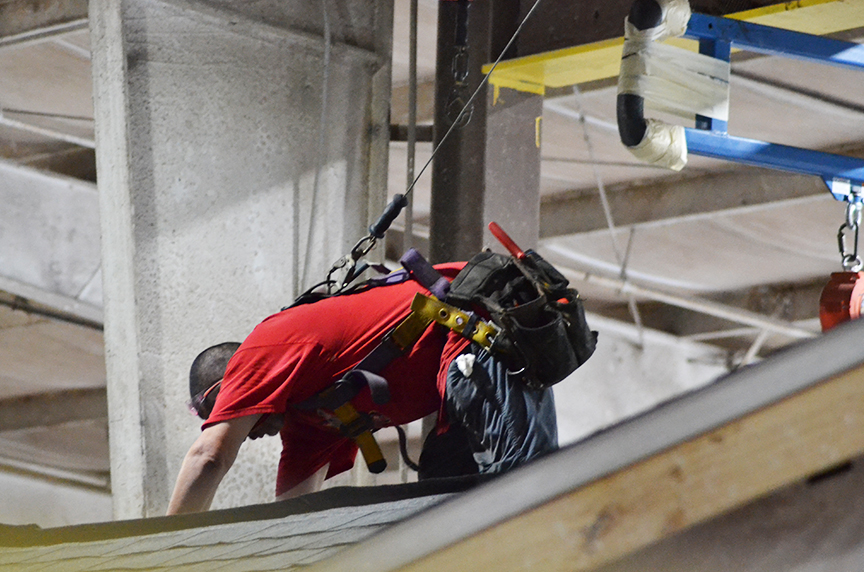
Preparation has a direct impact on cost. Facilities that know exactly where each lifeline and piece of gear is located will spend less on labor than those where inspectors must hunt down equipment. When all harnesses and SRLs are collected in one central area, technicians can complete inspections efficiently and move through the site without delays.
Access is another cost driver. If production areas are still active when inspectors arrive, they may have to wait for clearance, shut down machinery, or bring in lifts. Idle time increases total cost, even if the inspection itself is straightforward. Providing clear access to the equipment and ensuring the necessary aerial lifts or ladders are available will prevent unnecessary delays.
Location and Scheduling
Location plays a big factor in pricing as well. Remote or out-of-state sites typically include travel and mobilization costs. For customers in high-density regions where service technicians are nearby, rates are often lower because travel time is minimal.
Companies that schedule inspections at the same time as crane or rigging services can further reduce expenses by sharing the same crew and eliminating a separate trip.
What’s Not Usually Included in a Fall Protection Inspection?
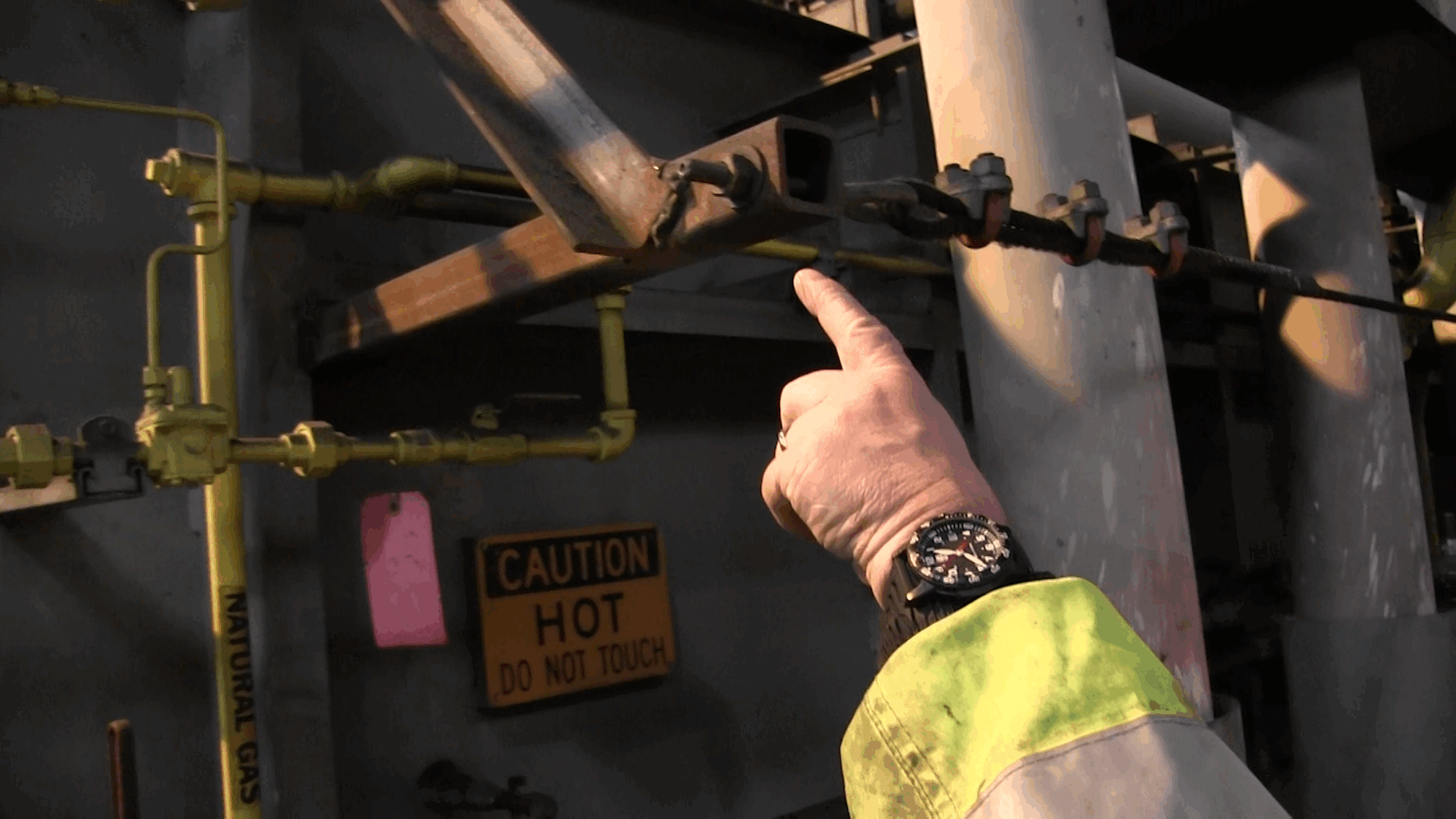
Most quotes for lifeline inspections are comprehensive, but certain conditions fall outside standard pricing. Delays of more than 30 minutes due to access restrictions or production conflicts can incur extra time charges. Emergency or after-hours inspections—when a system must be cleared immediately for work to continue—may involve higher service rates.
If inspectors discover additional systems on site that were not part of the original quote, those will be added to the invoice based on the same hourly rate. Likewise, large facilities that require multiple days or additional equipment rentals (such as manlifts or scaffolding) may see those items listed separately.
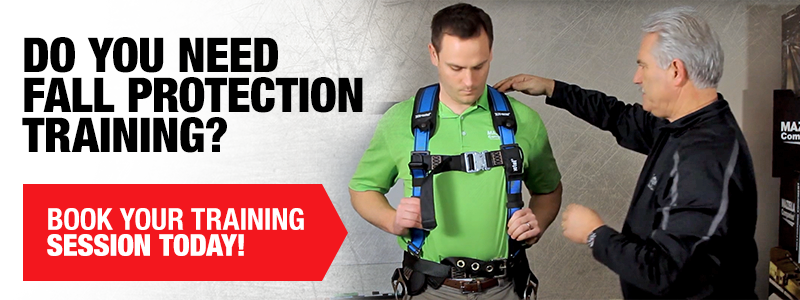
How to Prepare for a Lifeline Inspection

To control costs and minimize disruption, preparation is key. A well-organized facility can cut inspection time nearly in half. Before scheduling:
- Make a complete list of all fall protection systems, including the manufacturer, location, and date of last inspection.
- Ensure all documentation, drawings, or certification records are accessible.
- Confirm that lifts or ladders needed for elevated systems are available and operational.
- Designate a representative to accompany inspectors and provide access to restricted areas.
- If possible, consolidate soft goods such as harnesses, lanyards, and SRLs in one location.
The better organized a site is, the smoother the inspection process will be—and the lower the final cost.
What Happens After a Lifeline Inspection?
Once the inspection is complete, you’ll receive a detailed report outlining which systems are compliant and which require corrective action. Components that are damaged or uncertified will be tagged out of service. The report typically includes photos, test results, and notes about any deficiencies found.
For systems that fail inspection, a follow-up quotation for repairs or re-certification is usually provided. Some companies choose to repair immediately, while others schedule it during their next maintenance cycle. Either way, the inspection report becomes your official record of compliance, demonstrating that the company has taken reasonable steps to maintain a safe work environment.
Payment is typically issued after the final report is delivered. Most vendors invoice only after the customer has received the documentation verifying the inspection was completed.
How Often are Lifeline Inspections Required?
Under OSHA’s Walking-Working Surfaces standard (29 CFR 1910 Subpart D) and the ANSI Z359 family of standards, fall protection systems must be inspected by a competent person at least once every twelve months and immediately following any incident that subjects the system to fall forces.
If a fall occurs, that system must be removed from service and re-inspected before it can be used again. In these cases, a Professional Engineer is often required to re-certify the system, since the structural integrity of the anchorage or supporting frame may have been compromised.
Even if no incidents occur, keeping to an annual schedule is essential. Over time, metal components can corrode, cables can lose tension, and anchors can loosen due to vibration or weather. Regular inspection ensures small issues are corrected before they lead to failure.
The Cost of Doing Nothing
Neglecting required inspections carries far greater financial risk than performing them. OSHA penalties for fall protection violations often exceed $15,000 per citation, and repeat offenses can multiply those costs quickly. But fines are only part of the story.
A single workplace fall can result in lost-time injuries, medical expenses, and legal costs that exceed several million dollars. Industry data suggests that a serious fall-related injury can cost more than $3 million when factoring in lost productivity, worker replacement, training, and indirect administrative expenses.
Beyond compliance, inspections protect your employees and your reputation. Customers and contractors increasingly expect documented safety programs as a condition of doing business. A current inspection record demonstrates that your company takes those expectations seriously.
Making Lifeline Inspections Part of Your Safety Budget
The cost of a lifeline inspection is small compared to the risk of an unverified system. A few thousand dollars a year can prevent millions in potential losses, injuries, and fines.
For companies with multiple facilities, creating a centralized inspection schedule ensures consistency and simplifies documentation. Many organizations now use digital asset management tools that track inspection history and automatically remind teams when re-certification is due.
Ultimately, a proactive inspection program sends a clear message that worker safety is a priority for your organization.
Final Thoughts on Lifeline Inspections
The cost of a lifeline inspection depends on scope, system design, and certification needs, but most fall between $500 and $10,000. Whether handled by a service technician or a Professional Engineer, inspections provide tangible value by maintaining compliance, preventing accidents, and ensuring your fall protection systems are ready when they’re needed most.
For large facilities or those with complex systems, planning ahead and maintaining accurate documentation will minimize costs and maximize safety. Investing in regular inspections protects not only your equipment but also your people.
At Mazzella, our in-house team of fall protection professionals are here to help. Contact our team to schedule and inspection.
Keep safety top of mind with Mazzella’s Fall Safety 101 Infographic Poster. It breaks down OSHA height requirements, key components of a fall protection system, and the hierarchy of controls to help your team stay compliant year-round.

Copyright 2025. Mazzella Companies.
